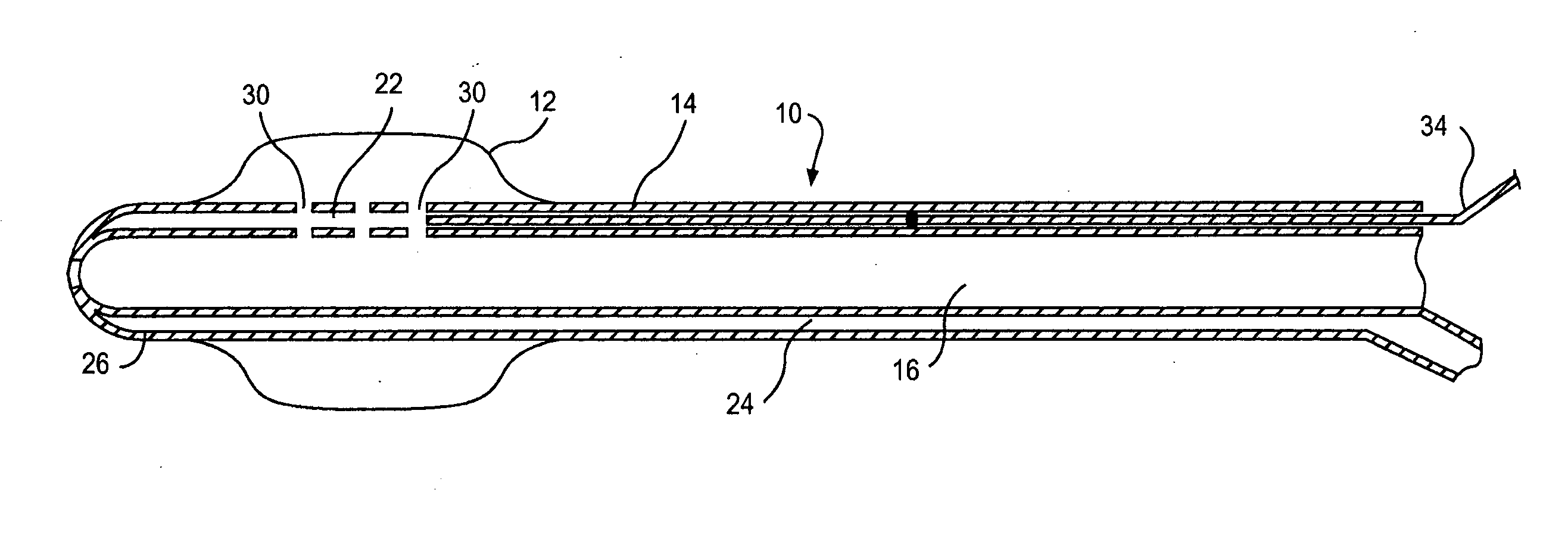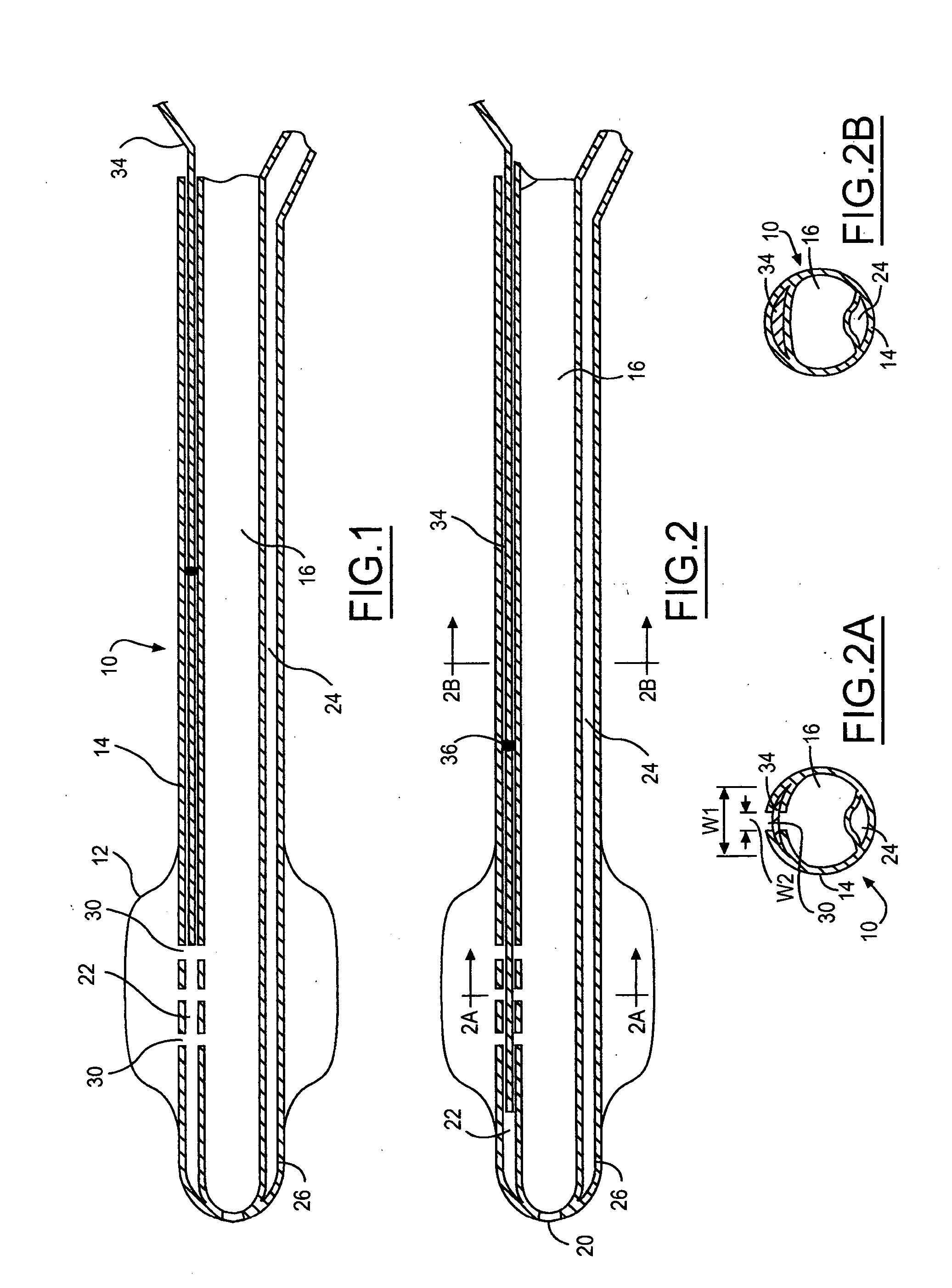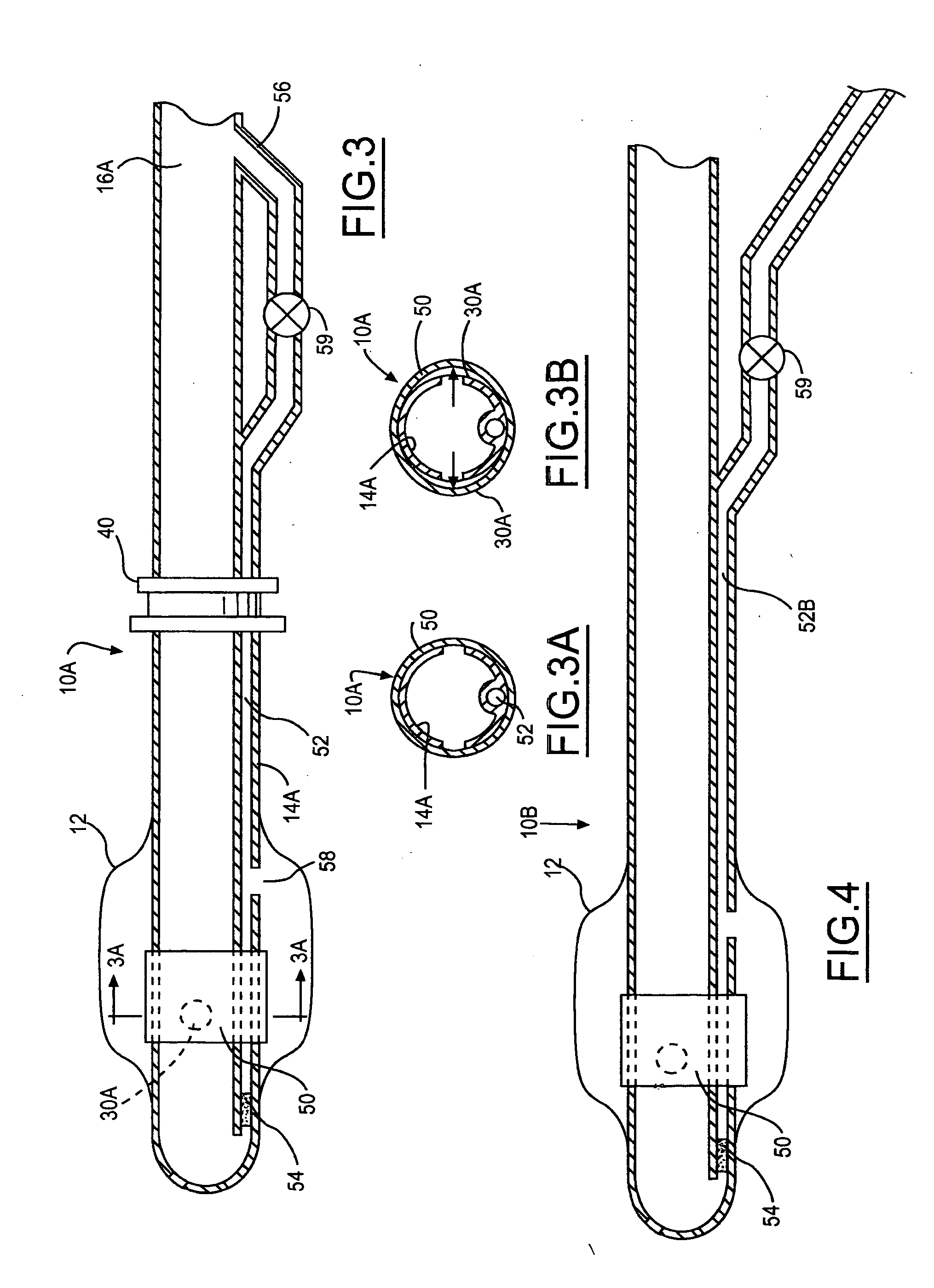Retrograde cannula having automatically inflatable balloon
a cannula and retrograde technology, applied in the field of balloon cannulas, can solve the problems of over-inflating the balloon, damage to the coronary sinus, and the distal end of the cannula may undergo unwanted displacemen
- Summary
- Abstract
- Description
- Claims
- Application Information
AI Technical Summary
Benefits of technology
Problems solved by technology
Method used
Image
Examples
Embodiment Construction
[0025] Depicted in FIGS. 1-2B is a retrograde cannula 10 having an automatically inflatable balloon adjacent its distal end. The cannula 10 includes a body 14 formed of a flexible plastic material suitable for insertion into a human body, such as PVC, urethane or silicone. Extending generally centrally through the body is an infusion lumen 16 capable of conducting a fluid, such as cardioplegia (CPG) from a proximal end of the cannula to one or more outlet openings 20 formed adjacent a distal end of the cannula. The outlet opening(s) may comprise forwardly-facing openings or side-facing openings.
[0026] Also formed in the cannula body 14 are a control lumen 22 and a pressure monitoring lumen 24 extending parallel to the infusion lumen. The pressure monitoring lumen 24 includes an opening 26 at its distal end for communicating with the interior of a vessel into which the cannula is to be inserted. The pressure monitoring lumen 24 serves as a pressure lumen to enable pressure in the ve...
PUM
 Login to View More
Login to View More Abstract
Description
Claims
Application Information
 Login to View More
Login to View More - R&D
- Intellectual Property
- Life Sciences
- Materials
- Tech Scout
- Unparalleled Data Quality
- Higher Quality Content
- 60% Fewer Hallucinations
Browse by: Latest US Patents, China's latest patents, Technical Efficacy Thesaurus, Application Domain, Technology Topic, Popular Technical Reports.
© 2025 PatSnap. All rights reserved.Legal|Privacy policy|Modern Slavery Act Transparency Statement|Sitemap|About US| Contact US: help@patsnap.com



